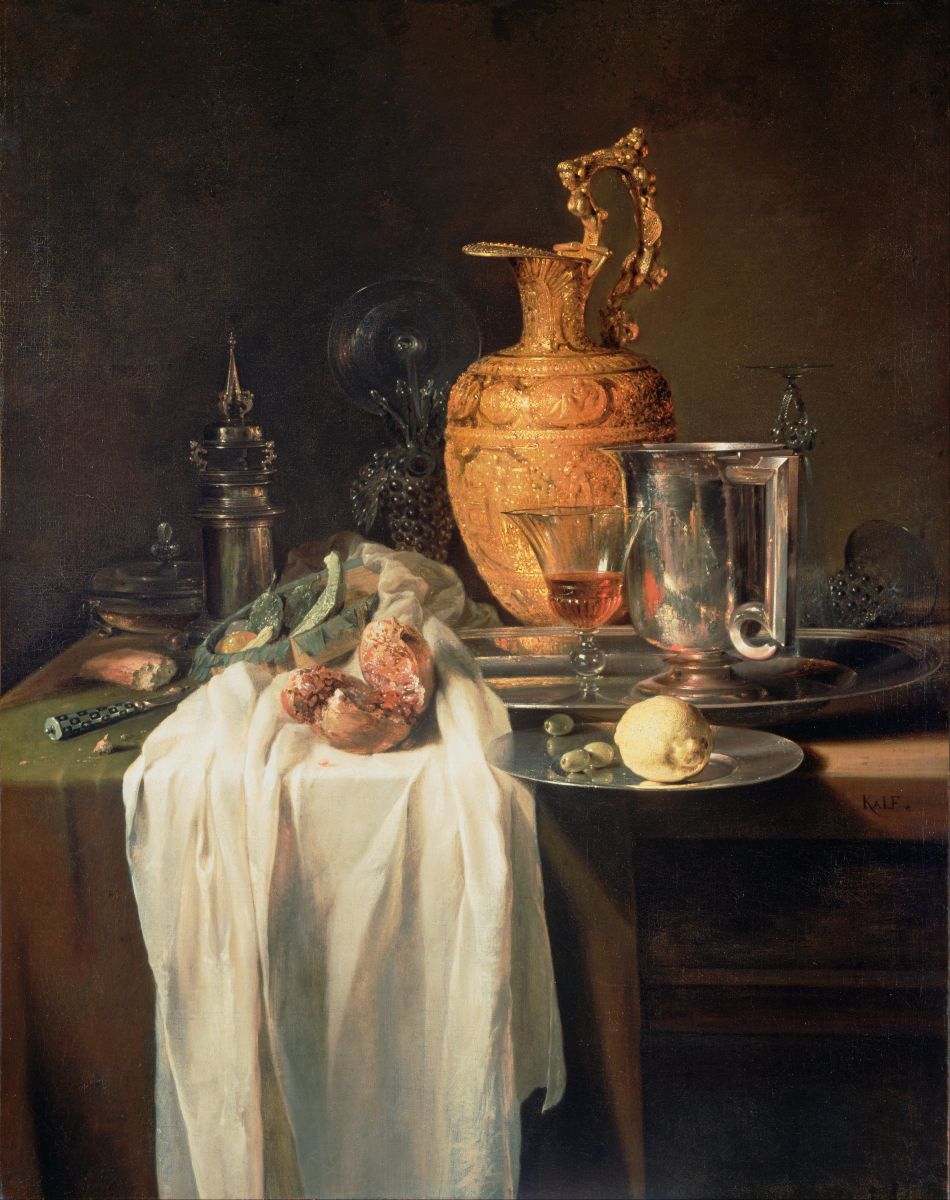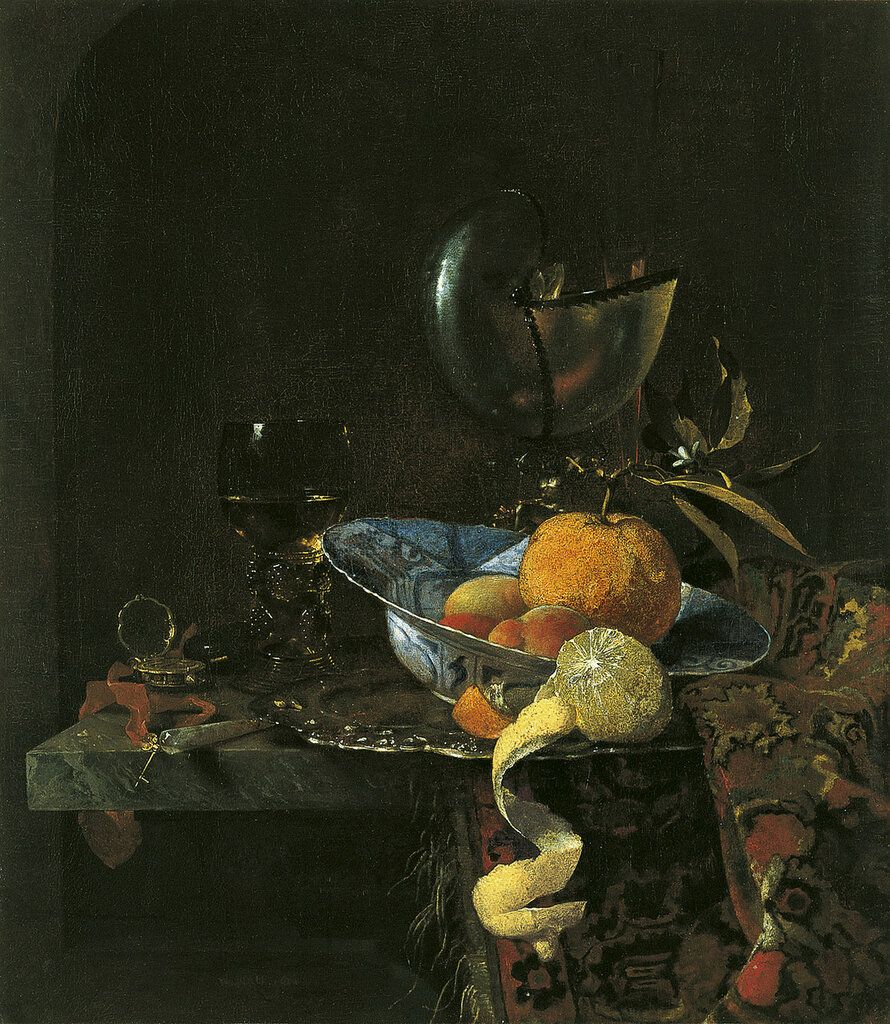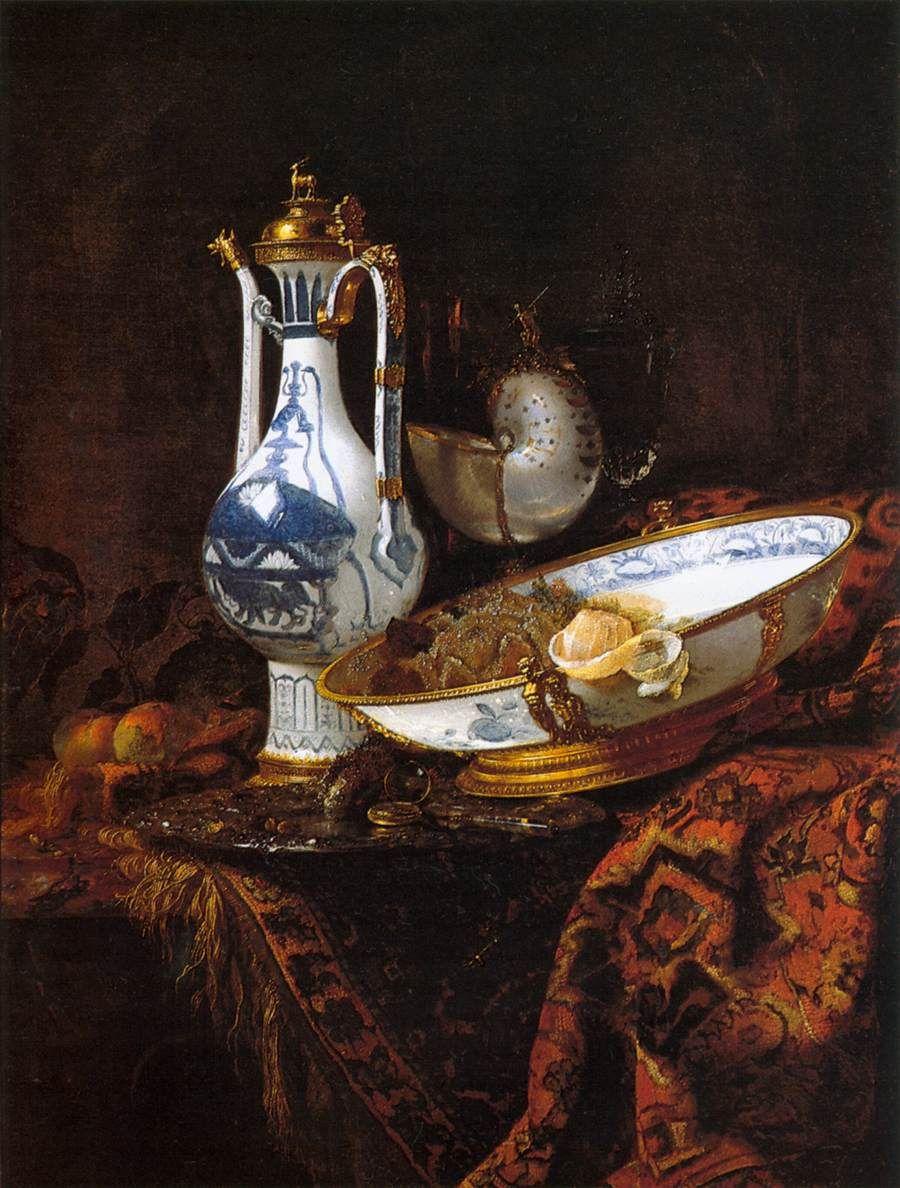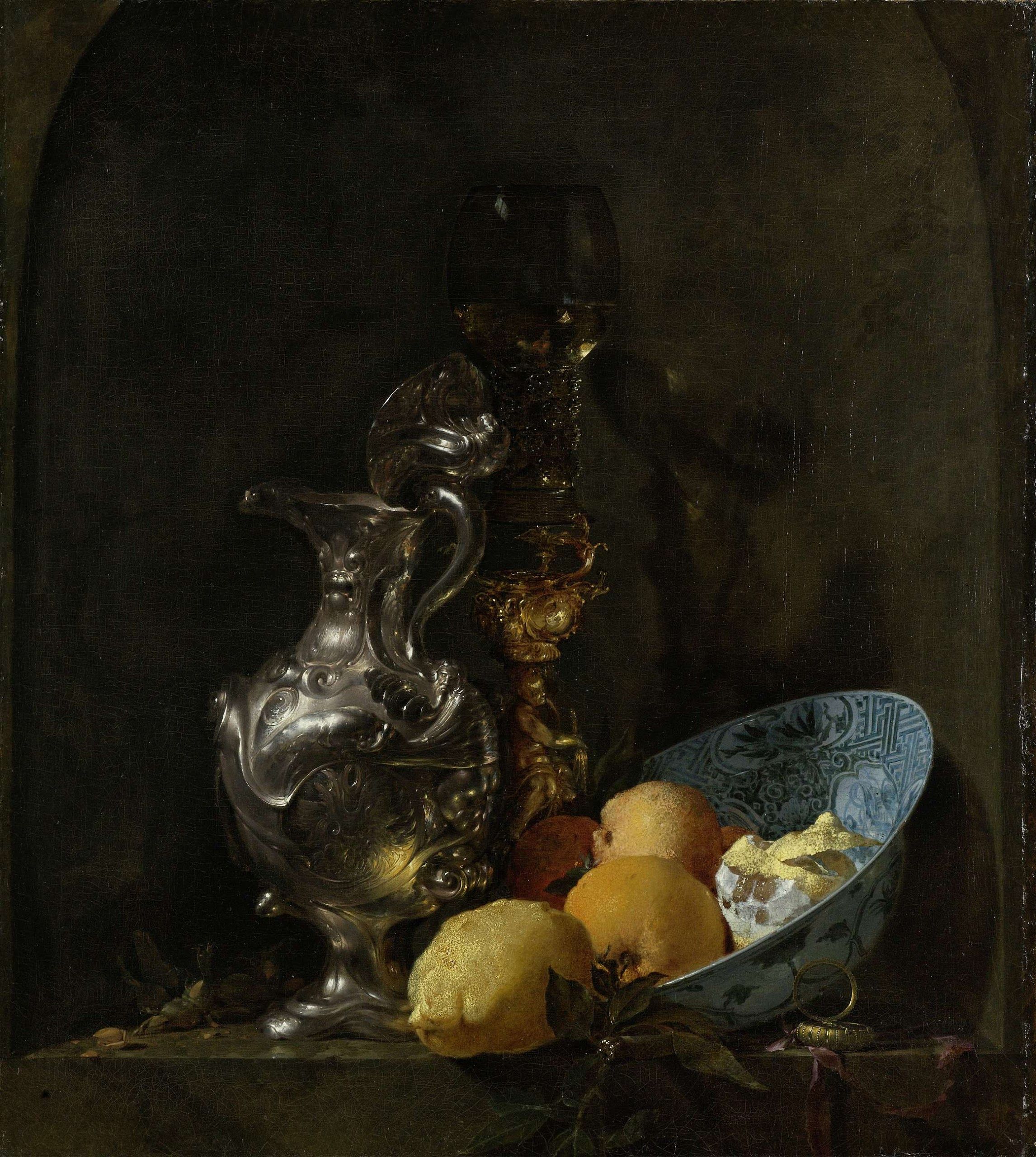Willem Kalf: Master of Dutch Still-Life Painting

In the pantheon of Dutch Golden Age artists, Willem Kalf stands out as an exceptional talent in the genre of still-life painting. Born in Rotterdam in 1619 and active in the 17th century, Kalf made an indelible mark on art history with his rich depictions of lavish domestic interiors and sumptuous arrangements of objects that convey a sense of opulence and refined taste. His work is characterized by an exquisite attention to texture and detail, a masterful use of light and shadow, and a deep appreciation for the beauty of everyday objects. This article explores the life, career, and legacy of Willem Kalf, whose paintings continue to captivate viewers with their quiet elegance and remarkable craftsmanship.
Early Life and Training
Willem Kalf came from a prosperous merchant family, which provided him with a comfortable upbringing and exposure to the cultural and artistic milieu of the period. He initially studied under the still-life painter Hendrick Pot and later worked with leading artists in Haarlem and Amsterdam. Kalf's early work shows the influence of these teachers but also reveals a budding style that would soon brand him as one of the most skilled still-life painters of his time.

Transition to Still Life
It was during Kalf's residence in Paris, from roughly 1646 to 1653, that he began to refine the style that would make him famous. There, Kalf was exposed to lavish goods and wares brought in through international trade, which greatly influenced his choice of subject matter. His still-life compositions began to incorporate an opulent array of items, including Chinese porcelain, Venetian glassware, and intricate silver-gilt cups, often arranged on tables draped with oriental carpets.

The Height of Success
Upon returning to Amsterdam, Kalf established himself as one of the city's leading artists. He became a member of the Guild of Saint Luke and married a well-connected woman, which helped him secure commissions from the merchant elite who sought to celebrate their affluence through art. Kalf's paintings from this period, often known as 'pronkstillevens' or sumptuous still lifes, demonstrate a sophisticated use of dramatic lighting and a keen eye for composition. They not only displayed the wealth of the household but also served as a reflection of the Dutch Golden Age's prosperity.

Technique and Interpretations
Kalf's technique involved building up layers of color and using various glazes to enhance the luminosity and texture of his subjects. His mastery of depicting different materials, from the translucence of glass to the reflective surfaces of metalware, was unparalleled. Scholars have often interpreted his work as symbolic, seeing in the objects reminders of the transience of life and the folly of materialism—a common theme in Dutch still-life known as 'vanitas'.

Legacy and Influence
Willem Kalf left behind an oeuvre that continues to be admired for its technical prowess and aesthetic beauty. His work had a significant influence on subsequent generations of still-life painters, both in the Netherlands and across Europe. Today, Kalf's paintings are treasured in some of the world's most prestigious museums, including the Louvre in Paris, the Metropolitan Museum of Art in New York, and the Hermitage in St. Petersburg.
As a touchstone for the Dutch still-life tradition, Kalf's legacy extends beyond his individual works to the broader appreciation of the genre. Through his innovative compositions and his ability to elevate the ordinary to the extraordinary, Willem Kalf has secured his place as one of the masters of 17th-century Dutch painting.

Willem Kalf remains a key figure in the study of Dutch Golden Age art, renown for his ability to transform simple objects into a celebration of visual opulence. His paintings are more than just portraits of wealth and luxury; they are meditations on the human condition, explorations of light and form, and testimonies to the enduring power of artistic expression. With a portfolio that continues to resonate with modern audiences, Willem Kalf's work is a testament to the timeless allure of the still-life genre.